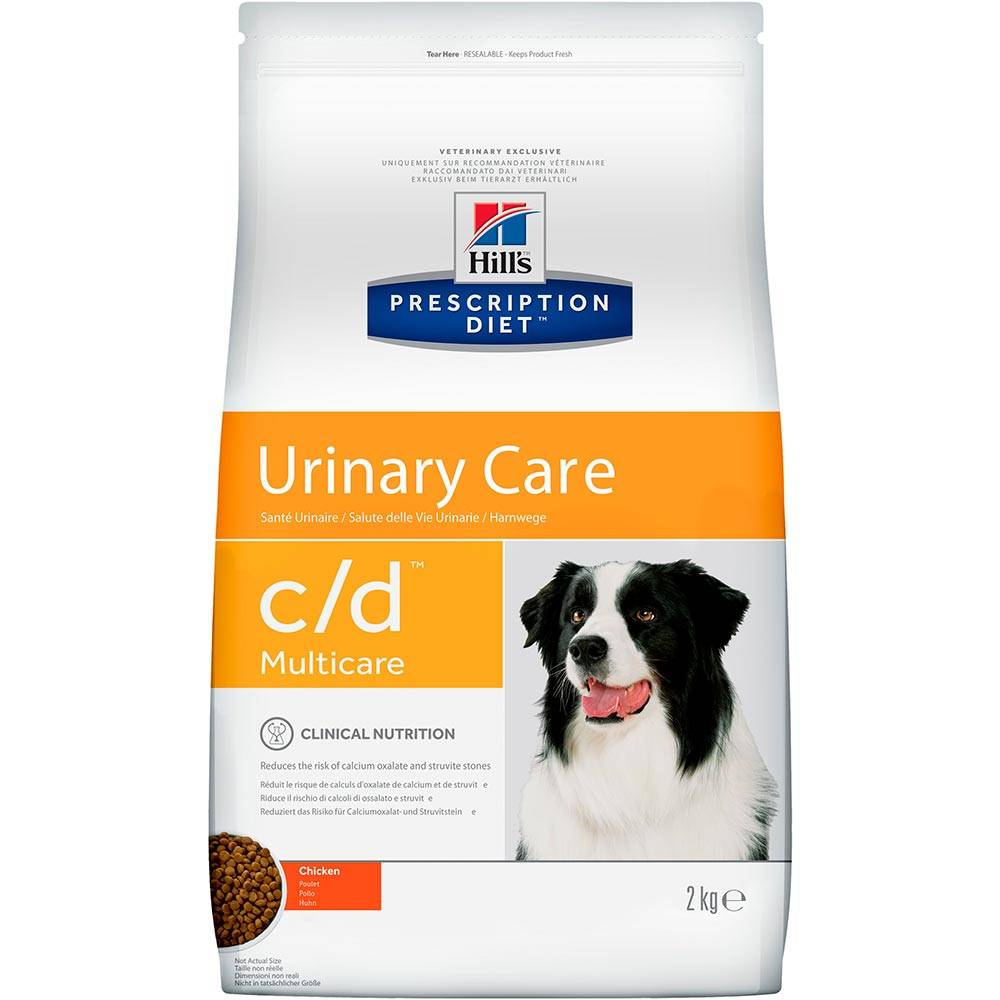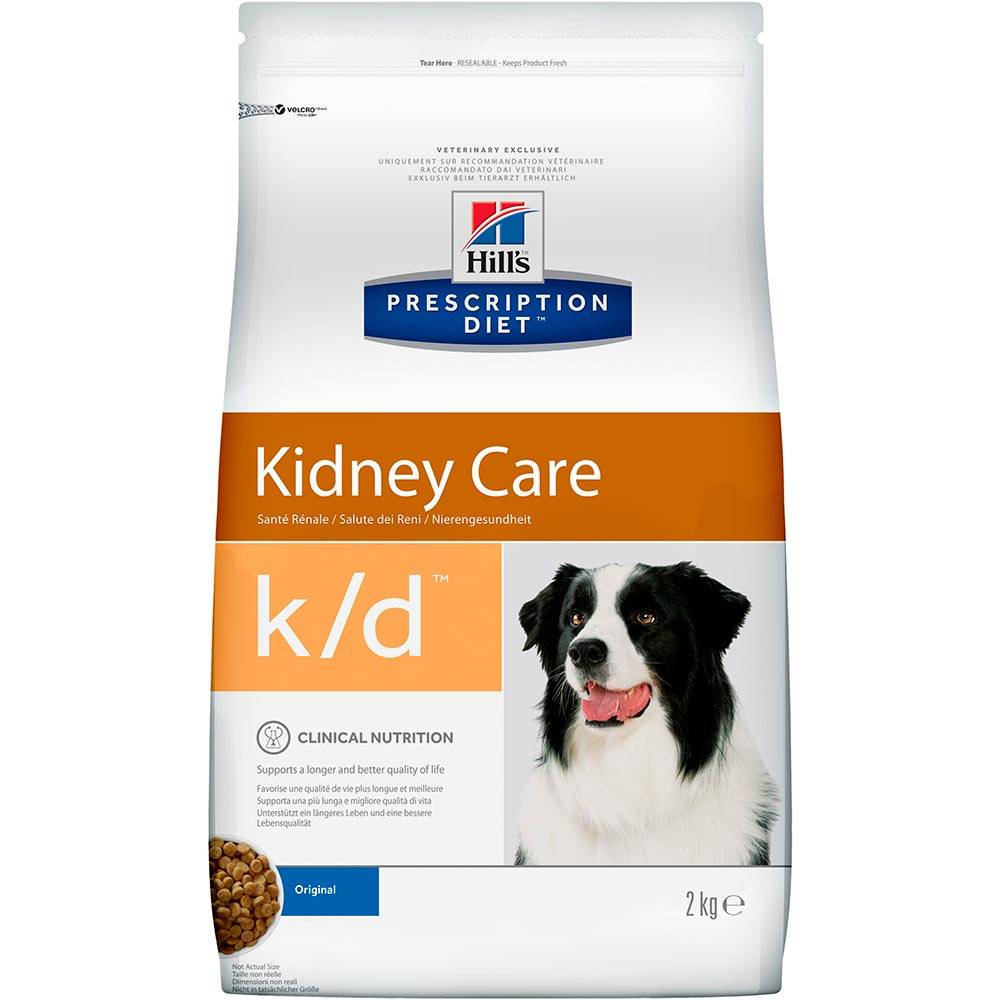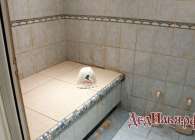How to feed the dog with urolithiasis correctly? Urolithiasis, including stones in the bladder, is very serious and dangerous. By the way, where do they come from, these same stones? And how does it all start?
How to feed a dog with urolithiasis
According to statistics, about 25 % of dogs of all breeds and ages are subject to the development of urolithiasis (ICD). It is characterized by the formation of calculi in the urinary system. At risk are adult animals, and the English bulldog, dachshund, poodle, beagle, Australian shepherd, Shi-Tzu are most vulnerable from breeds.
Problems with the urinary system (MVS) are often directly related to improper nutrition of the animal, especially sterilized. In this situation, it is extremely important to choose the right food for dogs with urolithiasis.
In the article, we consider what industrial feeds are created specifically for the prevention and treatment of this dangerous disease, their composition and recommendations of veterinarians.
Types and characteristics of uronytas (stones)
The calculi that are formed in the organs of the dog’s MVS differ in species, composition, and degree of danger. In especially dangerous cases, the veterinarian diagnoses several varieties of stones at once, which complicates the treatment. Basic ur reproaches:
- Struvites. Consist of ammonium salts of magnesium phosphate. The reason for the formation is alkaline urine in combination with pathogenic microflora in the kidneys. They are found in dogs of all breeds and ages (more than 4-6 years), are poorly treated. Dachbs, Bigli, Tsverkshneuzers, Beijes, Scotch Terriers are especially susceptible to. Females are affected more often than male.
- Urates. The base of uric acid (ammonium urates) is based. They are found in young individuals, especially males, grow very quickly, and the reason is mostly poor metabolism, alkalization of urine. Breeds at risk-Maltese Bologna, Kern-Terrier, York, Irish Wolfhound, Australian Shepherd.
- Oksalates. Salt and oxalic acid esters. They are solid, with sharp faces, they can grow to large sizes, therefore they are dangerous for the life of a dog. More often develop in adult males of 6-7 years. They are predisposed to Shi-Tzu, the Yorkshire Terrier, the Lhasian APSO.
- Cystine. They are formed with excess in the urine of solid minerals. The most rare type (5 % of all cases). It affects 3-5-year-old male, bitches practically do not get sick. At risk – Chihuahua, York, Irish Terrier, English Bulldog, Dachshund.
Symptoms and stages of urolithiasis in dogs
The disease develops slowly, and the first symptoms often go unnoticed by the owner. The disease can be divided into 4 stages: asymptomatic (subclinical), light, hard and threatening life.
Subclinical form
Sand or microscopic pebbles appeared in the bladder, but you can see them only with ultrasound. The composition of the urine has also changed, its pH.The animal still behaves calmly, looks healthy.
Light form
The owner can guess about the developing disease by the way the pet shows the behavior characteristic of the ICD:
- often asks to go outside, sits for a long time, trying to urinate, but the volume of urine is less than usual;
- carefully licks the genitals, because he feels discomfort in this area;
- blood is visible in the urine;
- temperature rises slightly.
Severe form
The dog is seriously ill, and this can be seen with the naked eye by obvious symptoms:
- constantly lies, indifferent to everything;
- traces of blood in the groin from involuntary excretion of urine;
- attempts to urinate cause severe pain, the dog whines and “cries”;
- the outflow of urine is difficult, and filled, solid urinary is easy to feel;
- elevated temperature due to inflammation.
Threatening state
- urine does not pass at all;
- coma or severe weakness, the dog does not get up;
- overcrowding or rupture of the bladder (coma and death occur);
- intoxication – vomiting, convulsions;
- temperature drop to 37.5 (normal in dogs – up to 39 degrees).
Reasons for the development of urolithiasis
Veterinarians identify the following main factors for the occurrence of KSD:
- Large intervals between walks.
- Wrong nutrition.
- Lack of free access to water.
- Congenital pathologies of the kidneys.
- Infectious diseases MVS (urinary system).
Walks are vital for dogs, and not only to stretch their paws and get some air. A properly trained dog will not cope with its physiological needs in the home, so it will endure to the last. The schedule early in the morning and late in the evening for a short time provokes inflammation of the urinary system from stagnation of urine.
In addition, the duration of the walk should be sufficient for the pet to completely empty the bladder. The owner should know that the dog cannot get rid of the accumulated urine in one “sit” – her body is designed in such a way that she urinates several times in small doses during a walk.
It is best to walk with your pet 3 times a day, and if this is not possible, then try to do each walk as long as possible until the dog has completely emptied the bladder and intestines and warmed up properly.
Rarely filled bowl of water
Usually dogs often come to the bowl and drink little by little. It is extremely important that fresh water is always freely available, especially if the diet is based on dry food. The composition and hardness of the water are also of great importance. If it is hard and alkaline in the tap, it threatens to accumulate sediments in the kidneys and bladder, which will inevitably lead to urolithiasis. Water must be filtered or bottled.
Congenital pathologies and infectious diseases
These are internal factors leading to urolithiasis – slow metabolism, diseases of the liver, kidneys, blood vessels.
Pyelonephritis, urethritis, urocystitis, nephritis are infections that disrupt the functioning of the MVS organs. The pH level rises, the chemical composition of urine and blood changes – and this is a direct path to the development of KSD.
Wrong diet
The quality of industrial feed or natural feed directly affects the health of the pet. Savings on buying cheap food from an unknown manufacturer, feeding the dog from the table of the owners can turn into treatment costs.
Important! An unbalanced diet is an almost 100% risk of getting a sick dog.
Features of food for dogs with urolithiasis
With the diagnosis made, the veterinarian describes in detail the protocol for treating and feeding the pet. Therapeutic dog food for urolithiasis includes certain elements that significantly reduce the size of stones or completely dissolve them. Every serious manufacturer includes veterinary feeds in their lines, denoting them with the word Urinary.
Rating of medicated feed

This therapeutic dry food from Royal Canin for adult dogs of small breeds is designed to prevent and treat urolithiasis with struvite and oxalate calculi.
Long-term use helps to reduce the saturation of urine and the gradual dissolution of uroliths – within 1-3 months. To prevent relapse, the course of Urinary S / O Small Dogs should be at least 6 months. Upon completion, the dog should be examined and, if the veterinarian recommends, continue this diet throughout the life of the pet.
The composition of the granules:
- corn flour;
- rice;
- animal fats;
- dehydrated animal proteins and fats;
- vegetable fiber;
- corn gluten;
- minerals;
- egg powder;
- fish fat;
- soybean oil;
- marigold extract.
Contraindications: heart failure, chronic kidney disease, pregnancy and feeding puppies, treatment with medications that cause increased acidity of urine.

Hill's therapeutic dry food is designed to prevent the recurrence of struvite and calcium phosphate in the urine. Formulated with antioxidants to neutralize free radicals and with a strong flavor profile, dogs love it. When feeding Hill's Prescription Diet Dog c/d, it is necessary to monitor the composition of the urine, and also exclude urinary tract infections before treatment – infection increases the pH of urine, which makes treatment less effective.
- flour from poultry meat;
- corn powder;
- pea bran flour;
- flax-seed;
- animal fat;
- antioxidants;
- protein hydrolyzate;
- vitamins, microelements.
Contraindications: pregnancy and lactation, childhood, treatment with drugs that acidify urine, pancreatitis, hyperlipidemia, non-struvite KSD.

In dry granules – a reduced content of high quality protein. This property of the feed can prevent the toxic breakdown of metabolic products.Valuable omega-3 fatty acids improve blood flow, which helps to improve the condition of the kidneys. The presence of antioxidants neutralizes the action of free radicals. The use of dry food Presscription Diet K/D Kidney Care in the early stages can stop the progression of the disease. Long -term feeding improves quality and significantly prolongs the life of the pet.
- eggs and derivatives from them;
- cereals;
- meat products;
- minerals and vitamins;
- pea protein;
- Plant products.
Contraindications: It is not recommended to give puppies, pregnant and nursing bitch, as well as dogs with pancreatitis and hyperilipidemia (abnormally increased lipid levels).
Farmina Vet Life Dog Oxalate
Dry food without chicken for dogs with ICD from the manufacturer Farmina is prescribed for the prevention and dissolution of all types of calculi during ICD. In order to reduce the concentration of oxalate, granules contain small inclusion of calcium and vitamin D3. To reduce urates and cystins, the presence of sulfur -containing amino acids and proteins is limited. To prevent the formation of crystals, potassium citrate is included in the composition. He changes ph urine towards alkalizing.
Treatment of oxalate and urate ICDs will require at least 6 months, and with irreversible disorders of uric acid metabolism and chronic renal failure, the pet should be given to the pet all his life. With cystine ICD, the use of the use is at least a year.




